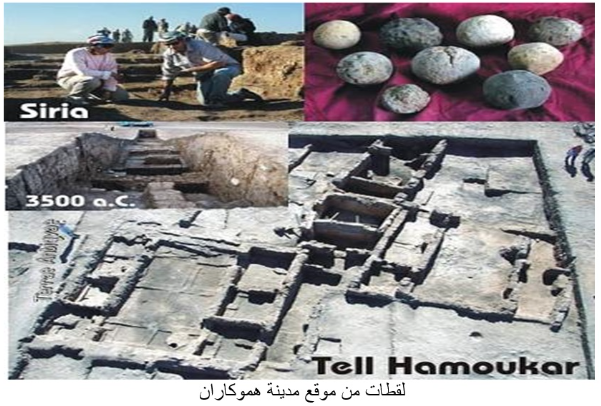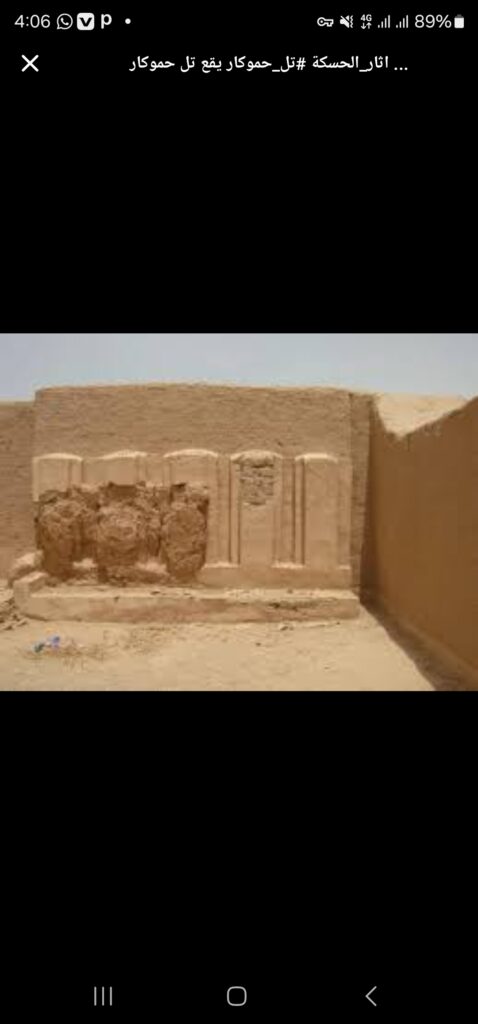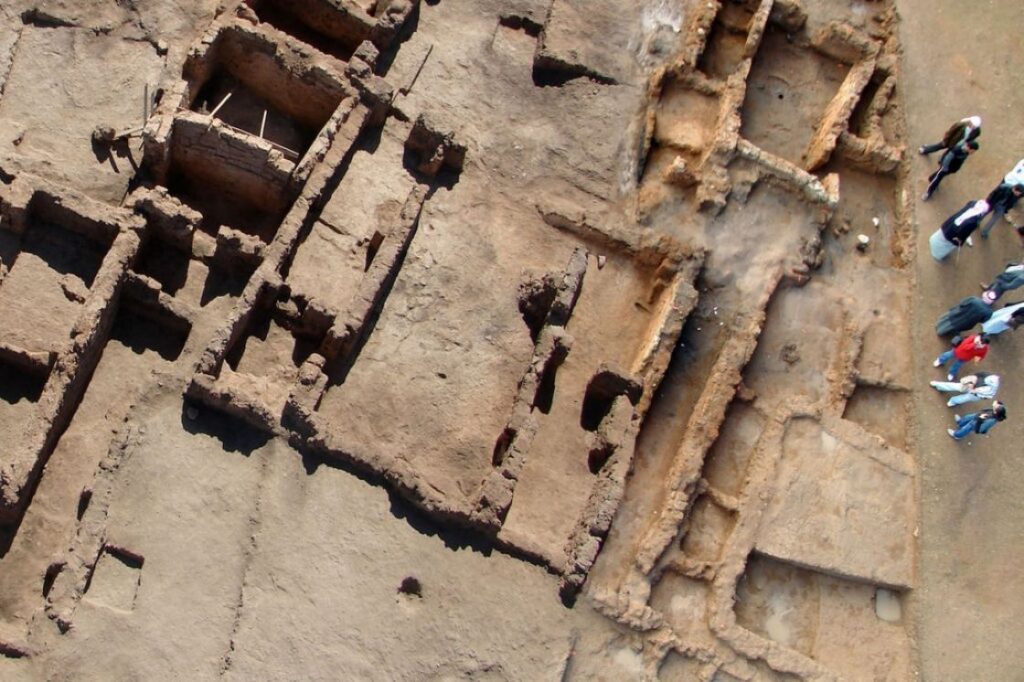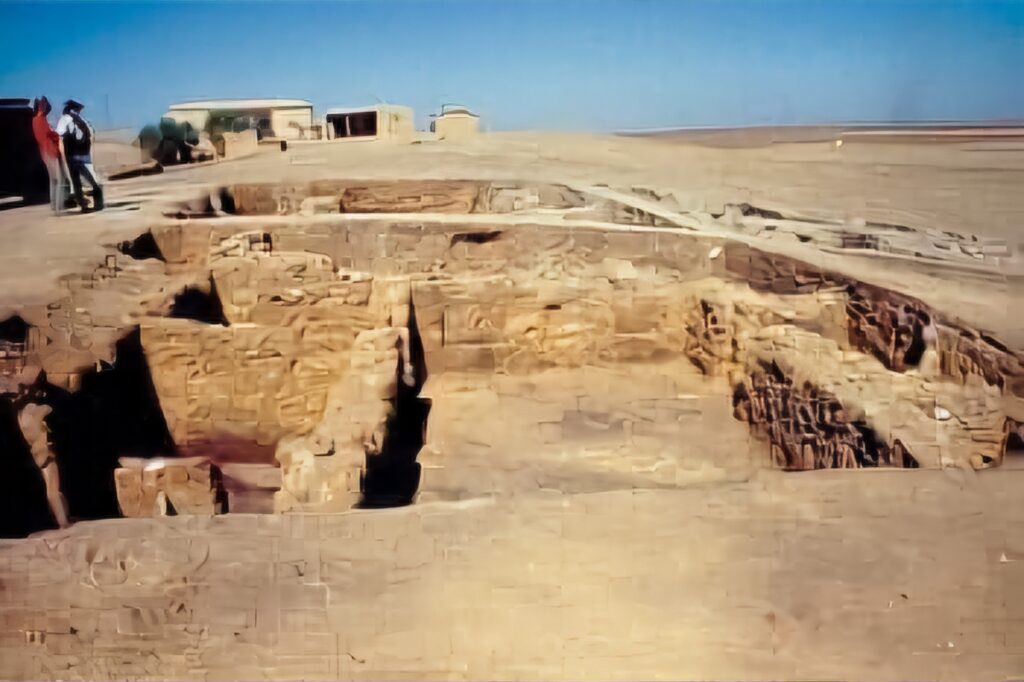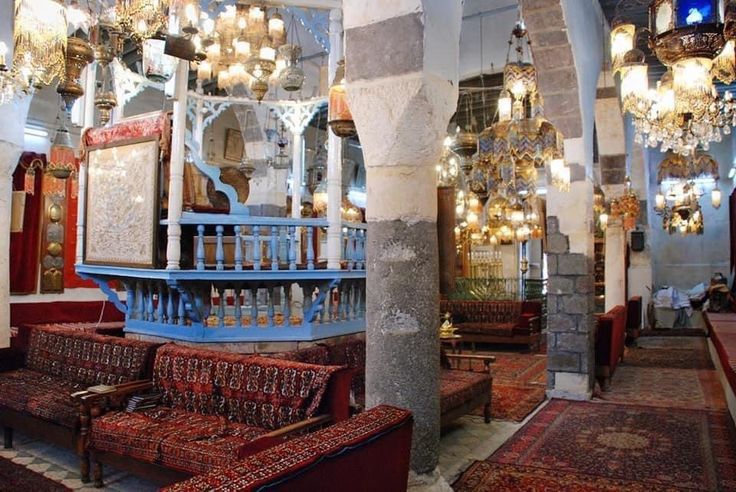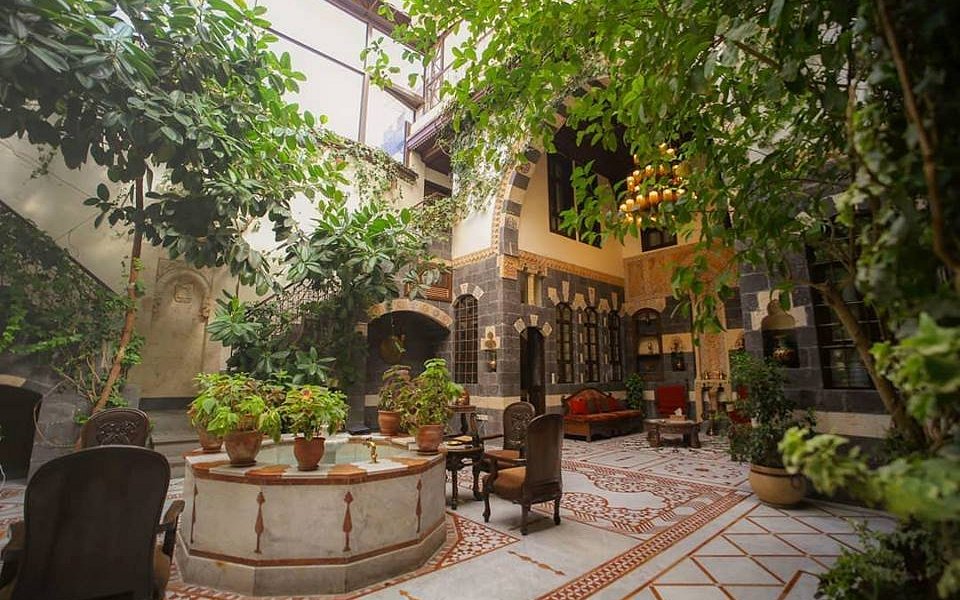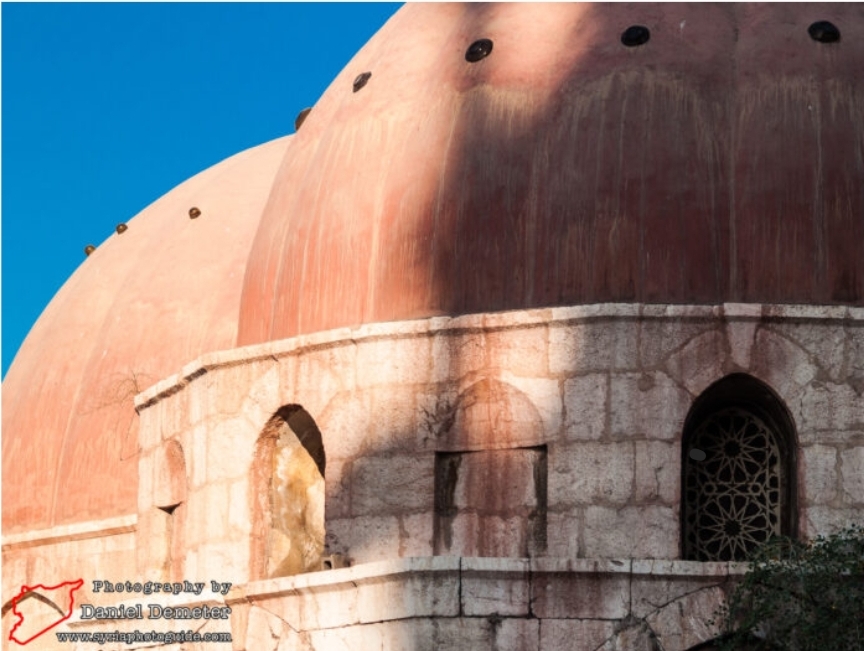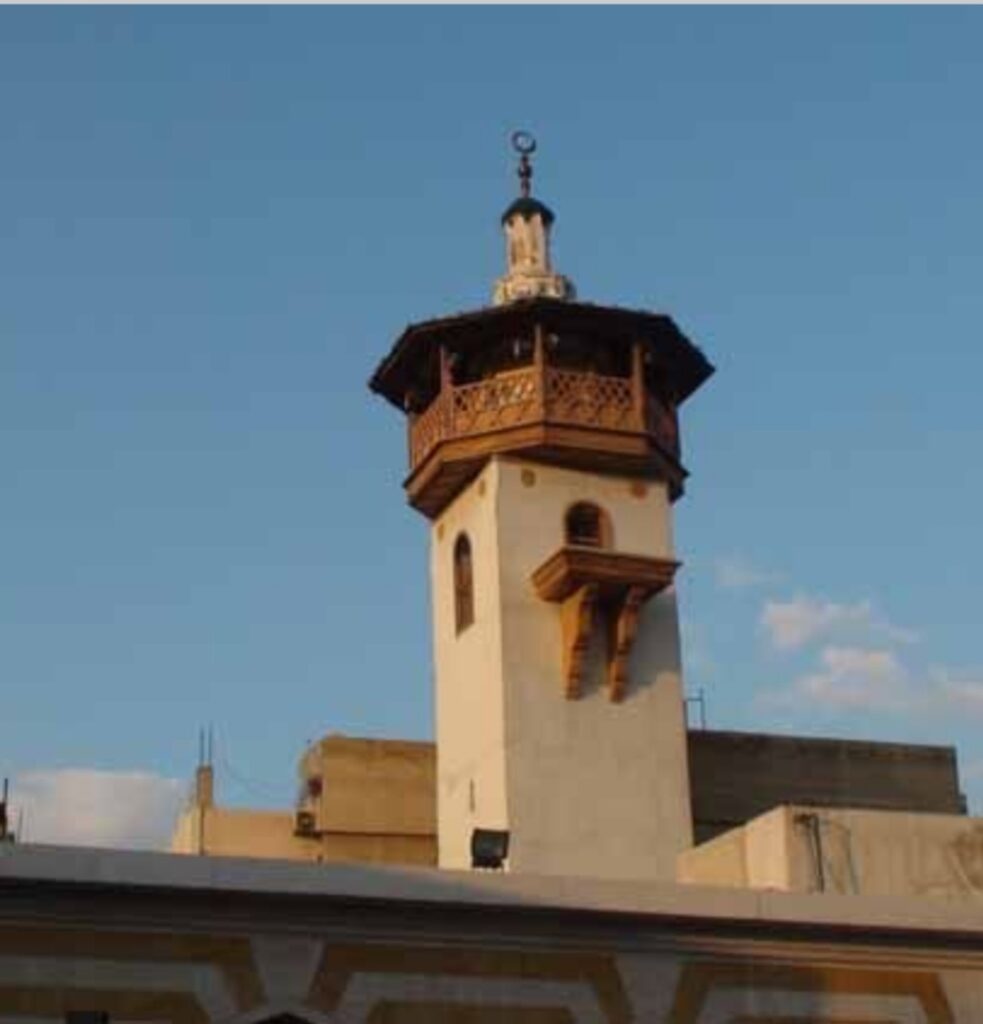Covering 92 hectares, tel Hamoukar is one of the largest Chalcolithic-period centers in the Upper Mesopotamian region. Excavations led by the University of Chicago in 2005 uncovered mounds of baked sling bullets embedded in a burn layer dated to around 3500 BCE—the earliest known archaeological evidence of organized warfare.
Before its destruction, the site was a hub for steatite seal production and the weaving of fine linen textiles exported southward toward Uruk, as suggested by seal motifs depicting ships and pack animals—clear signs of long-distance trade.
The upper layers revealed a small Assyrian administrative settlement, including a governor’s residence built of limestone. Since 2014, illegal digging has damaged parts of the northern fortification, prompting local restorers to backfill the tunnels using lime-rich mud.


